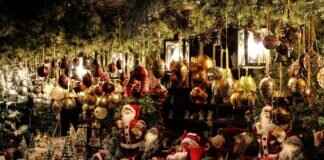Mongolian cuisine is a fascinating tapestry woven from the threads of its rich cultural heritage and the nomadic lifestyle of its people. At the heart of this culinary tradition lies a deep appreciation for hearty meat dishes, which are essential to the diet of the Mongolian nomads. The unique flavors and cooking methods that define this vibrant cuisine reflect the harsh yet beautiful landscape of Mongolia, where the vast steppes and rugged mountains shape both the food and the people.
Mongolian cuisine predominantly features meat, particularly lamb, beef, and goat, alongside dairy products and grains. The reliance on these ingredients is a direct result of the nomadic lifestyle, where livestock provides not only sustenance but also a means of survival. The use of dairy is particularly significant, with products like yogurt, cheese, and milk forming staple components of the diet.
The nomadic lifestyle of Mongolia profoundly influences its culinary practices. Mobility dictates food preparation methods, with dishes often being cooked over open flames or in portable ovens. This adaptability ensures that meals can be prepared quickly and efficiently, catering to the needs of a constantly moving population.
Mongolian cuisine is renowned for its diverse range of meat dishes. Among the most popular are buuz and khorkhog. Buuz, traditional steamed dumplings filled with seasoned meat, are a favorite during celebrations and family gatherings. Khorkhog, on the other hand, involves cooking meat with hot stones in a sealed container, creating a flavorful and tender dish that embodies the communal spirit of Mongolian dining.
Dairy products are indispensable in Mongolian cuisine, providing essential nutrients and flavors. Aaruul, a type of dried curd, serves as a nutritious snack for nomadic herders, while airag, fermented mare’s milk, is a traditional beverage enjoyed during festivities. These dairy items not only nourish but also connect the people to their cultural roots.
Traditional cooking methods in Mongolia reflect the country’s harsh climate and nomadic lifestyle. Techniques such as roasting, steaming, and boiling are prevalent, each suited to the available ingredients and cooking conditions. The use of open flames and smoky flavors is common, adding depth to the dishes.
Seasonal changes play a crucial role in determining the types of food consumed in Mongolia. In the summer, fresh dairy products and meats are abundant, while winter necessitates the preservation of food through drying and fermenting. This cyclical nature of food availability shapes the traditional dishes enjoyed throughout the year.
Mongolian food is steeped in cultural traditions and practices. Meals are often communal, fostering a sense of community among family and friends. Food is also integral to various rituals and celebrations, symbolizing hospitality and respect. The act of sharing a meal is a cherished aspect of Mongolian culture, reflecting values of generosity and togetherness.
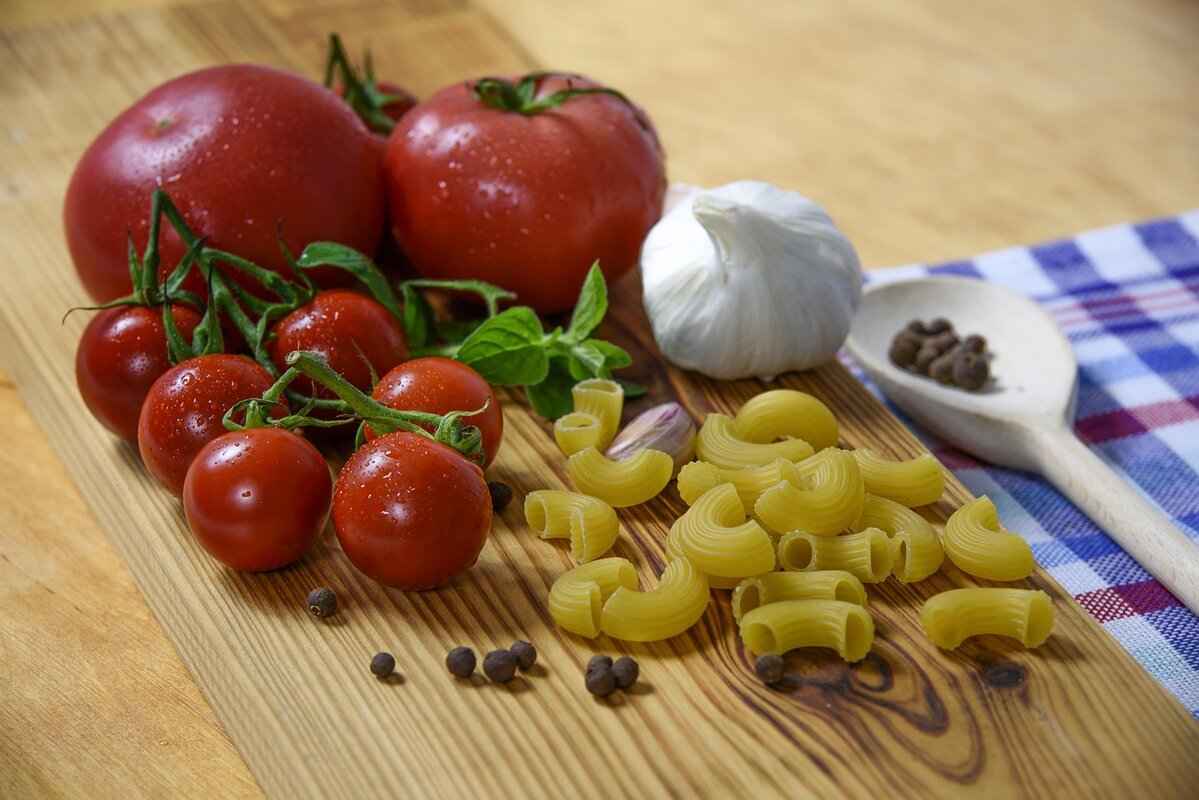
What Are the Key Ingredients in Mongolian Cuisine?
Mongolian cuisine is a fascinating blend of flavors and traditions, deeply rooted in the country’s unique geography and nomadic lifestyle. At the heart of this culinary experience are three essential ingredients: meat, dairy, and grains. Understanding these components not only enhances our appreciation of Mongolian dishes but also sheds light on the cultural practices that shape them.
Mongolian cuisine heavily relies on meat, dairy, and grains, which are fundamental to its hearty dishes. The predominance of meat, particularly from sheep, goats, and horses, is a reflection of the country’s vast pastures and the nomadic lifestyle of its people. Meat is often prepared in various ways, including boiling, roasting, or steaming, allowing for a variety of flavors and textures.
- Meat: The most commonly consumed meats in Mongolia include mutton, beef, and horse meat. These meats are rich in protein and provide the energy needed for the physically demanding lifestyle of herders.
- Dairy: Dairy products play an integral role in the diet of Mongolian people. Items such as milk, yogurt, cheese, and fermented products are not only nutritious but also serve as staples during long journeys.
- Grains: While grains are less prominent than meat and dairy, they are still essential in the form of flour and barley. These ingredients are often used to make traditional dishes like buuz (dumplings) and momo (steamed buns).
The rich use of these ingredients is a testament to the resilience and adaptability of the Mongolian people. Their culinary practices have evolved over centuries, influenced by the harsh climate and the need for sustenance on the move. The nomadic lifestyle necessitates a diet that is both nourishing and easy to prepare, leading to the development of hearty recipes that can withstand the test of time.
The preparation of Mongolian dishes often involves traditional cooking methods that reflect the culture’s connection to the land. For instance, meats may be cooked over an open flame or in a khorkhog (a unique barbecue method using hot stones), which adds a distinct flavor and enhances the communal aspect of dining.
Dairy products are often transformed into various forms, such as airag (fermented mare’s milk) and aaruul (dried curd), which serve as both food and drink, providing hydration and nutrition during long treks. Grains are typically ground into flour to create dough for dumplings and bread, showcasing the versatility of these ingredients.
The communal nature of Mongolian dining is also significant. Meals are often shared among family and friends, reinforcing social bonds and cultural traditions. This practice highlights the importance of food not just as sustenance but as a means of bringing people together.
Understanding the key ingredients of Mongolian cuisine is essential for appreciating the culture and lifestyle of the Mongolian people. Each ingredient tells a story of survival, adaptation, and community. The reliance on meat, dairy, and grains reflects not only the geographical realities of Mongolia but also the rich traditions that have been passed down through generations.
In conclusion, the hearty nature of Mongolian cuisine is a direct result of its fundamental ingredients, shaped by a nomadic lifestyle that values resilience and community. By exploring these key components, we gain insight into a vibrant culinary heritage that continues to thrive today.
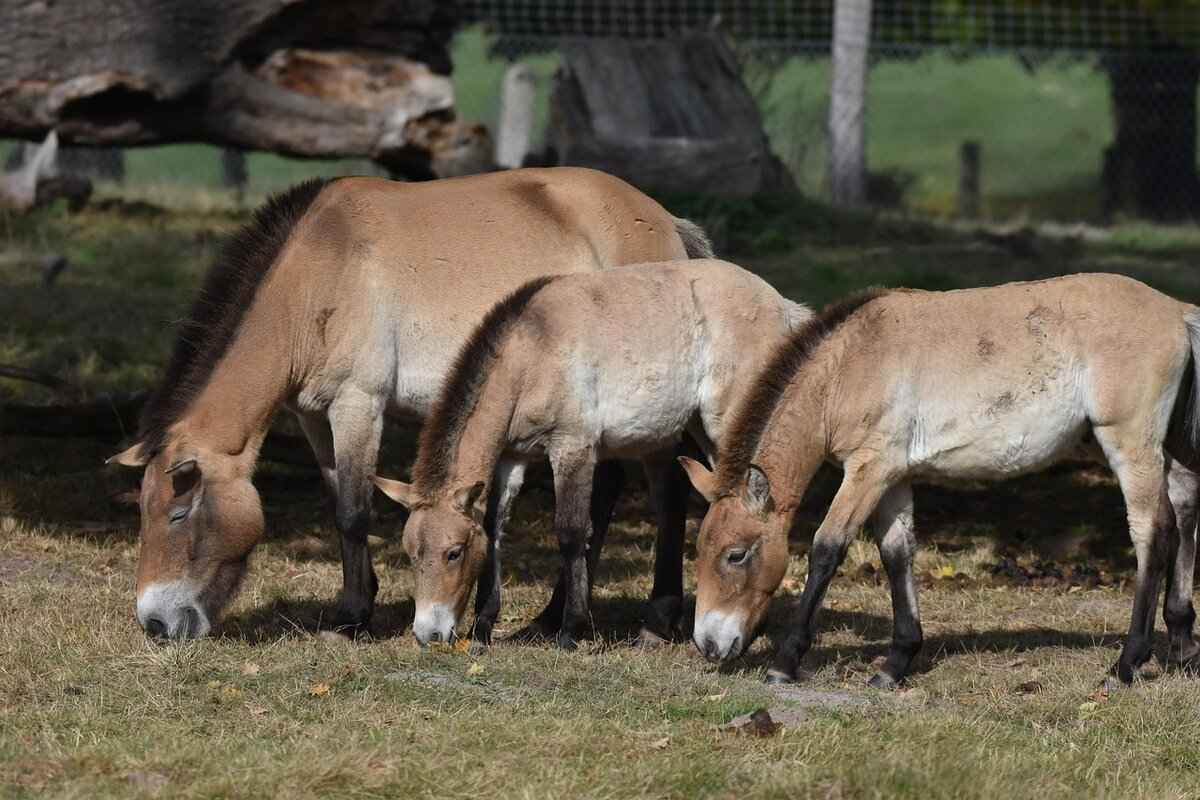
How Does the Nomadic Lifestyle Influence Mongolian Food?
The nomadic lifestyle of Mongolian herders has a profound influence on their culinary practices, shaping not only what they eat but also how they prepare their food. This unique way of life, characterized by mobility and adaptability, dictates the selection of ingredients and the methods of cooking that are passed down through generations.
Due to the vast and often harsh landscapes of Mongolia, herders are constantly on the move, following their livestock to find fresh pastures. This mobility significantly limits the variety of fresh produce available to them, leading to a heavy reliance on meat, dairy, and grains. Commonly consumed meats include mutton, beef, and goat, while dairy products such as milk, yogurt, and cheese are staples in their diet. These ingredients not only provide essential nutrition but also reflect the herders’ connection to their animals and the land.
The preparation of food is deeply intertwined with the nomadic lifestyle. Traditional cooking methods such as boiling, steaming, and roasting are often employed, utilizing simple tools that can be easily transported. For example, buuz (steamed dumplings) are made using a portable steamer, while khorkhog (barbecue) involves cooking meat in a pot with hot stones, a method that is both efficient and communal. These techniques not only highlight the resourcefulness of the herders but also foster a sense of community as families gather to prepare and share meals.
The nomadic lifestyle also means that food preparation is highly seasonal. In the summer, when pastures are abundant, herders focus on fresh dairy products and meats. In contrast, during the harsh winters, they rely on preserved foods such as dried meats and fermented dairy, which can withstand the cold. This adaptability ensures that the herders have access to nutritious food year-round while minimizing waste.
Food in Mongolian culture is not merely sustenance; it carries significant cultural meaning. Meals are often communal events, serving as opportunities for bonding and celebration. Traditional dishes are prepared for special occasions, such as weddings and festivals, emphasizing the importance of food in social rituals. Additionally, the way food is shared reflects the values of hospitality and generosity that are central to Mongolian culture.
In conclusion, the nomadic lifestyle of Mongolian herders plays a crucial role in shaping their culinary practices. From the selection of ingredients to the methods of preparation, every aspect of their food culture is influenced by their mobility and connection to the land. This rich culinary heritage not only sustains their physical needs but also reinforces cultural bonds and traditions, making it an integral part of their identity.

What Are the Most Popular Meat Dishes in Mongolia?
Mongolian cuisine is renowned for its rich and hearty meat dishes, reflecting the country’s nomadic traditions and cultural heritage. The vast steppes of Mongolia provide an abundance of livestock, making meat a central component of the diet. This section delves into the most popular meat dishes in Mongolia, exploring their preparation methods and their significance in Mongolian society.
In Mongolia, meat is not just food; it is a symbol of hospitality and community. Here are some of the most beloved meat dishes:
- Buuz: These steamed dumplings are filled with minced meat, typically mutton or beef, and seasoned with garlic and onion. Buuz is especially popular during the Lunar New Year celebrations and is often served at family gatherings. The preparation involves wrapping the filling in dough and steaming them until tender, creating a savory treat that embodies Mongolian warmth.
- Khorkhog: A unique barbecue dish, khorkhog is prepared using a whole lamb or goat. The meat is cooked in a pot with hot stones, creating a smoky flavor that is distinctive to this dish. Khorkhog is often enjoyed during special occasions and communal gatherings, emphasizing the importance of sharing food in Mongolian culture.
- Tsukemono: These are marinated meats, often served as a side dish. The process involves soaking the meat in a mixture of vinegar, salt, and spices, which enhances its flavor and preserves it for longer periods. Tsukemono is a staple in many households, reflecting the resourcefulness of the nomadic lifestyle.
- Shul: A hearty meat soup, shul is made with a variety of meats, including mutton and beef, along with vegetables and noodles. It is a comforting dish that is particularly popular during the cold winter months, providing nourishment and warmth.
- Boodog: This is a traditional dish where a whole goat or marmot is cooked from the inside out. The animal is stuffed with hot stones and herbs, then sealed and cooked over an open fire. Boodog is often prepared during celebrations and showcases the resourcefulness of Mongolian herders.
Each of these dishes is not only a culinary delight but also a representation of the Mongolian way of life. The preparation methods often involve communal effort, reflecting the strong ties within families and communities.
The preparation of Mongolian meat dishes is deeply rooted in tradition. For instance, buuz is typically made during the winter months when families gather to make large batches, which are then frozen for later consumption. Khorkhog, on the other hand, involves a unique cooking method that utilizes hot stones, showcasing the ingenuity of nomadic cooking techniques.
Mongolian meat dishes are integral to various cultural practices and celebrations. For example, during the Naadam Festival, which celebrates the “Three Manly Sports,” dishes like khorkhog are served to honor guests and foster community spirit. Furthermore, the act of sharing meals, especially meat dishes, signifies friendship and hospitality, core values in Mongolian society.
In summary, Mongolian cuisine is characterized by its hearty meat dishes that reflect the country’s nomadic traditions and cultural values. From buuz to khorkhog, each dish holds a special place in the hearts of the Mongolian people, symbolizing not just sustenance but also community, celebration, and heritage.
What is Buuz and How is it Prepared?
Buuz, a beloved traditional dish in Mongolia, is a type of steamed dumpling that holds a special place in the hearts of the Mongolian people. Known for its savory filling and soft, delicate dough, buuz is not just a meal; it is a cultural symbol that represents hospitality and community. This article delves into the ingredients, preparation techniques, and the various occasions on which buuz is typically served.
The primary ingredients of buuz include:
- Flour: The foundation of the dumpling, providing the necessary structure.
- Meat: Traditionally, mutton or beef is used, finely minced and seasoned.
- Onions: Chopped onions add moisture and flavor to the filling.
- Salt and Pepper: Essential seasonings that enhance the taste.
- Garlic and Ginger: Optional ingredients that can add depth to the flavor profile.
Preparing buuz is an art that has been passed down through generations. The process begins with making the dough:
1. Combine flour and water to form a smooth dough.2. Knead the dough until it is elastic and let it rest.
While the dough rests, the filling is prepared:
1. Mix minced meat with chopped onions, salt, and pepper.2. Optionally, add garlic and ginger for extra flavor.
Once the filling is ready, the next steps involve:
1. Dividing the dough into small pieces and rolling them into circles.2. Placing a spoonful of filling in the center of each circle.3. Folding the dough over the filling and pinching the edges to seal.
Finally, the buuz are steamed until cooked through, typically around 15-20 minutes. The steaming process ensures that the dumplings remain moist and tender.
Buuz is often associated with special occasions and celebrations in Mongolia. They are a staple during:
- Tsagaan Sar: The Mongolian Lunar New Year, where families gather to celebrate and share traditional foods.
- Weddings: Buuz are served as part of the feast, symbolizing prosperity and unity.
- Festivals: During various cultural festivals, buuz is a common dish that brings people together.
In addition to these occasions, buuz can also be enjoyed as a hearty snack or meal at any time, reflecting the nomadic lifestyle of the Mongolian people.
What sets buuz apart from other dumplings is its cultural significance and the communal experience of making and sharing them. Families often gather to prepare buuz together, fostering a sense of togetherness and tradition. Each family may have its own unique recipe, passed down through generations, adding to the rich tapestry of Mongolian culinary heritage.
In conclusion, buuz is more than just a delicious dumpling; it is a reflection of Mongolian culture, tradition, and community. Whether enjoyed during special occasions or as a comforting meal, buuz continues to be a cherished part of Mongolian cuisine.
How is Khorkhog Cooked and Served?
Khorkhog, often regarded as the quintessential Mongolian barbecue dish, is a culinary marvel that highlights the rich traditions and communal spirit of Mongolian culture. This unique dish is not merely about the food; it embodies the essence of togetherness and the nomadic lifestyle that has shaped Mongolian cuisine for centuries.
Khorkhog is a traditional barbecue method that involves cooking meat, typically lamb or goat, alongside hot stones. The process is deeply rooted in Mongolian customs, making it a significant dish during gatherings and celebrations. The unique aspect of Khorkhog lies in its preparation method, which utilizes the natural heat of stones to cook the meat, infusing it with a distinct flavor.
The preparation of Khorkhog begins with selecting high-quality meat, often sourced from freshly butchered animals. The meat is cut into large chunks and seasoned with a blend of salt and pepper. Fresh herbs may also be added to enhance the flavor. The key ingredient, however, is the hot stones, which are heated in a fire until they are red hot.
Once the stones are ready, they are placed inside a large metal pot along with the seasoned meat. The pot is then tightly sealed, often with a lid or cloth, to trap the heat. The cooking process typically takes around one to two hours, allowing the meat to become tender and infused with the smoky flavor of the stones. This method not only cooks the meat but also retains its natural juices, resulting in a succulent dish.
Khorkhog is traditionally served in a communal setting, reflecting the Mongolian culture of sharing meals. The pot is brought to the table, and diners gather around to enjoy the dish. The meat is often accompanied by boiled potatoes or vegetables, which absorb the rich flavors from the cooking process. Diners typically use their hands to eat, emphasizing the communal and informal nature of the meal.
The preparation and consumption of Khorkhog is more than just a meal; it is a social event. Families and friends come together to participate in the cooking process, sharing stories and laughter as they wait for the dish to be ready. This communal aspect fosters a sense of belonging and connection, making Khorkhog a centerpiece for celebrations, especially during festivals and family gatherings.
Khorkhog holds a special place in Mongolian culture, symbolizing hospitality and togetherness. It is often served during significant occasions, such as weddings and festivals, showcasing the importance of food in fostering relationships. The dish also embodies the nomadic lifestyle, as it can be prepared in various environments, whether in a yurt or outdoors.
The cooking method of Khorkhog is a testament to the resourcefulness of the Mongolian people. Utilizing available resources like stones and fire, it exemplifies the traditional practices that have been passed down through generations. The dish not only provides nourishment but also serves as a reminder of the rich cultural heritage and the enduring spirit of the Mongolian nomads.

What Role Do Dairy Products Play in Mongolian Cuisine?
Mongolian cuisine is a vibrant tapestry woven from the threads of its history, culture, and environment. Among the most significant components of this culinary landscape are dairy products, which not only provide essential nutrition but also contribute unique flavors and textures to various dishes. This section delves into the importance of dairy in the daily lives of the Mongolian people, exploring the different types of dairy products, their uses, and their cultural significance.
Mongolia’s harsh climate and nomadic lifestyle have led to a rich variety of dairy products. The primary sources of dairy are sheep, goats, cows, and camels. Some of the most popular dairy items include:
- Aaruul: Dried curd that serves as a nutritious snack.
- Airag: Fermented mare’s milk, revered for its refreshing taste.
- Shimiin aral: The creamy milk fat that is used in cooking.
- Yogurt: Often consumed as a side dish or snack.
Dairy products play a crucial role in the daily diet of Mongolians. They are often consumed fresh, used in cooking, or transformed into various traditional dishes. For instance, Aaruul is not only a snack but also a vital source of energy for herders during long days in the field. Airag, on the other hand, is enjoyed during special occasions and is often served to guests as a sign of hospitality.
Dairy products hold deep cultural significance in Mongolian society. They are integral to traditional rituals and celebrations. For example, during the Naadam festival, which celebrates the “Three Manly Sports,” Airag is commonly served to honor guests and showcase the hospitality of the host. Furthermore, the production of dairy is often a communal activity, strengthening social bonds among families and communities.
The nutritional value of dairy products cannot be overstated. They are rich in calcium, protein, and essential vitamins that are crucial for maintaining health, especially in a nomadic lifestyle where physical labor is prevalent. The fermentation process of products like Airag also enhances their digestibility, making them a valuable source of probiotics.
Traditional methods of dairy production in Mongolia are closely tied to the nomadic lifestyle. Milk is typically collected from animals and processed using age-old techniques. For example, Aaruul is made by boiling milk, then allowing it to cool and curdle before being shaped into small pieces and dried in the sun. This not only preserves the milk but also creates a portable and durable food source for herders.
Dairy products are often incorporated into traditional Mongolian dishes, enhancing their flavor and nutritional profile. For instance, Shimiin aral is commonly used in soups and stews, while yogurt is served as a refreshing side dish. The versatility of dairy allows it to complement the hearty meat dishes that are central to Mongolian cuisine.
In summary, dairy products are a cornerstone of Mongolian cuisine, providing essential nutrition, flavor, and cultural richness. From the production to the consumption of these products, they reflect the resilience and adaptability of the Mongolian people in their unique environment.
What Is Aaruul and How Is It Made?
Aaruul, a cherished form of dried curd, holds a significant place in Mongolian cuisine. This nutritious snack is not only a staple for the Mongolian people but also plays a vital role in the diet of nomadic herders. In this section, we will explore the fascinating process of how aaruul is made and its importance as a food source.
The process of making aaruul is both traditional and straightforward. It begins with fresh milk, typically from cows, goats, or sheep. Here’s a step-by-step breakdown of the aaruul-making process:
- Milk Collection: Fresh milk is collected from the herd, ensuring it is of high quality.
- Curdling: The milk is heated slightly and then mixed with a natural coagulant, often derived from the stomach of a young animal, to help it curdle.
- Separation: Once curdled, the mixture is strained to separate the solid curds from the liquid whey.
- Shaping: The curds are then pressed into small shapes or formed into bite-sized pieces.
- Drying: Finally, the shaped curds are dried in the sun or in a warm, dry place until they become hard and chewy.
Aaruul is packed with essential nutrients, making it an ideal snack for those leading a nomadic lifestyle. Here are some of the key nutritional benefits:
- High Protein Content: Aaruul is rich in protein, providing a substantial energy source for herders during long days.
- Calcium and Minerals: It is an excellent source of calcium and other minerals, which are crucial for maintaining bone health.
- Long Shelf Life: The drying process extends its shelf life, making it easy to store and transport.
For Mongolian nomads, aaruul is more than just a snack; it is a vital part of their daily sustenance. Here’s how it fits into their lifestyle:
- Convenient Nutrition: Aaruul serves as a quick source of energy, perfect for herders who are constantly on the move.
- Cultural Significance: It is often shared during gatherings and celebrations, symbolizing hospitality and community.
- Preservation of Tradition: The making of aaruul is a tradition passed down through generations, connecting the younger generations with their cultural heritage.
Aaruul can be enjoyed in various ways, making it a versatile snack. Here are some popular methods of consumption:
- On Its Own: Many enjoy aaruul as a standalone snack, appreciating its unique texture and flavor.
- With Tea: It is often paired with milk tea, providing a delightful contrast to the creamy beverage.
- In Dishes: Aaruul can also be incorporated into various dishes, adding a rich flavor and nutritional boost.
In summary, aaruul is an integral part of Mongolian culture and cuisine. Its preparation reflects the traditions of nomadic life, while its nutritional benefits support the active lifestyle of herders. As a snack, it not only nourishes but also connects people to their heritage, making it a beloved food in Mongolia.
How Is Airag Produced and Consumed?
Airag, the traditional fermented mare’s milk of Mongolia, is more than just a drink; it embodies the essence of Mongolian culture and heritage. This unique beverage is celebrated for its distinct flavor, nutritional benefits, and the cultural significance it holds in various Mongolian festivities.
The production of Airag is a meticulous process that begins with the milking of mares, which typically occurs in the early morning. The milk collected is then placed in a large container, traditionally made of wood or leather. Fermentation is initiated by adding a small amount of previously fermented Airag, which acts as a starter culture. The mixture is stirred vigorously to aerate it, promoting the growth of beneficial bacteria and yeast.
Over the next 24 to 48 hours, the mixture ferments at room temperature. During this time, it develops its characteristic tangy flavor and effervescence. Once fermentation is complete, the Airag is strained to remove any solids, resulting in a smooth, creamy beverage. It is then ready for consumption.
Airag is not only a refreshing drink but also boasts several health benefits. It is rich in vitamins, minerals, and probiotics, making it an excellent source of nutrition. The fermentation process enhances the bioavailability of nutrients, allowing for better absorption in the body. Some of the key health benefits include:
- Digestive Health: The probiotics in Airag support gut health and aid in digestion.
- Hydration: Its high water content helps in maintaining hydration, especially during hot summer months.
- Nutrient-Rich: Airag contains essential vitamins like B vitamins and minerals such as calcium and magnesium.
In Mongolian culture, Airag is more than just a beverage; it is a symbol of hospitality and community. It is often served during special occasions, such as festivals, weddings, and family gatherings. The drink is usually offered to guests as a sign of respect and goodwill.
During the Naadam Festival, which celebrates the “Three Manly Games” of wrestling, horse racing, and archery, Airag flows freely as a part of the festivities. It is common to see people toasting with Airag, sharing stories, and enjoying the camaraderie that comes with this cherished drink.
Airag is typically consumed fresh, and its flavor can vary from slightly sweet to tangy, depending on the fermentation time and the mare’s diet. It is often enjoyed chilled, especially during the hot summer months. In rural areas, it is common for families to have a large container of Airag available for guests and family members alike.
In addition to being drunk alone, Airag is sometimes used in cooking, adding a unique flavor to various dishes. It can be incorporated into soups or served alongside traditional foods like buuz and khuushuur.
Airag is deeply intertwined with the nomadic lifestyle of the Mongolian people. The practice of making and consuming Airag reflects the harmony between the people and their environment. It represents a way of life that values sustainability and community, making it a vital part of Mongolian identity.
As globalization continues to influence food cultures worldwide, Airag remains a steadfast symbol of Mongolian tradition, reminding both locals and visitors of the rich history and cultural practices that define this remarkable nation.
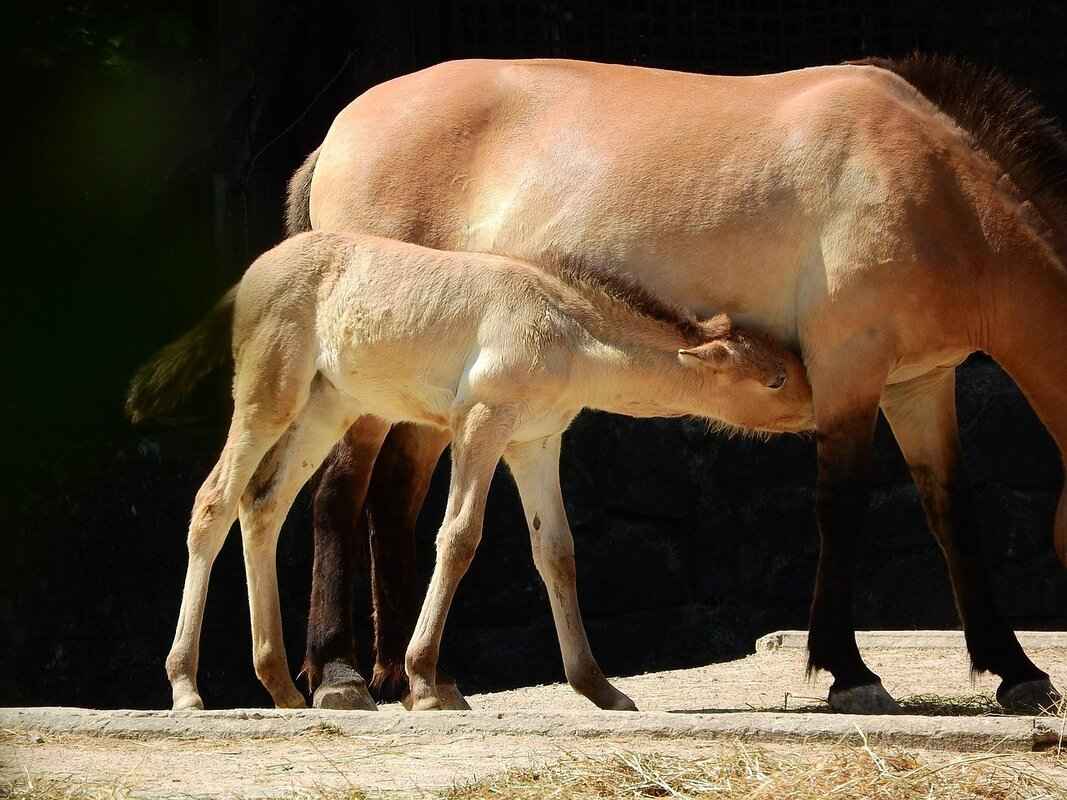
What Are the Traditional Cooking Methods in Mongolia?
Mongolian Cuisine: Hearty Meat Dishes and Nomadic TraditionsMongolia’s culinary landscape is a fascinating blend of tradition and necessity, shaped by its harsh climate and the nomadic lifestyle of its people. The traditional cooking methods employed in Mongolia are not merely techniques; they are a reflection of the environment and the culture that has evolved over centuries. This section delves into the various cooking methods such as roasting, steaming, and boiling, highlighting their significance in Mongolian culinary practices.
The traditional cooking methods in Mongolia are deeply rooted in the need for efficiency and practicality. Given the nomadic lifestyle, where mobility is essential, these methods have been developed to make the best use of available resources.
- Roasting: One of the most common methods, roasting is often done over an open flame or in a pit. This technique is particularly popular for preparing meat, such as lamb and goat, which are staples in the Mongolian diet. The process enhances the flavor and tenderness of the meat, making it a favorite among locals.
- Steaming: Steaming is another prevalent method, especially for dishes like buuz (steamed dumplings). This technique preserves the moisture and nutrients in the food, making it a healthy option. Steamed dishes are often served during special occasions and family gatherings, emphasizing their cultural significance.
- Boiling: Boiling is frequently used for preparing soups and stews, which are essential for providing warmth and sustenance in the cold Mongolian climate. Ingredients such as meat, vegetables, and grains are boiled together to create hearty dishes that are both nutritious and filling.
Each of these methods has its own unique characteristics and applications, contributing to the rich tapestry of Mongolian cuisine. For instance, roasting not only cooks the meat but also imparts a smoky flavor that is highly valued. In contrast, steaming maintains the integrity of the ingredients, allowing the natural flavors to shine through.
The traditional cooking methods in Mongolia are a direct response to the nomadic lifestyle. Mobility is paramount, and the ability to prepare food quickly and efficiently is vital. For example, the use of portable cooking equipment, like the ger (yurt), allows herders to cook meals wherever they are. Additionally, the reliance on preserved foods, such as dried meats and dairy products, ensures that nomads have sustenance even in remote areas.
Moreover, these cooking methods foster a sense of community and togetherness. Meals are often prepared collaboratively, with family members gathering to roast or steam food. This communal aspect is integral to Mongolian culture, where sharing food is synonymous with sharing life experiences.
Traditional Mongolian cooking methods also offer numerous health benefits. The emphasis on natural ingredients and minimal processing ensures that meals are rich in nutrients. Steaming, in particular, is recognized for preserving vitamins and minerals that might otherwise be lost through other cooking methods. Furthermore, the use of fresh meat and dairy contributes to a diet that is high in protein and essential fats, which are crucial for maintaining energy levels in the demanding Mongolian climate.
In conclusion, the traditional cooking methods of Mongolia are more than just culinary techniques; they are a testament to the resilience and adaptability of a people shaped by their environment. By understanding these methods, one gains insight into the heart of Mongolian culture, where food is a vital part of life, community, and tradition.

How Do Seasonal Changes Affect Mongolian Cuisine?
Mongolia’s diverse climate and vast landscapes significantly influence its culinary practices. As the seasons shift, so do the ingredients available to the nomadic herders, resulting in a dynamic and evolving food culture. This article delves into how seasonal changes affect Mongolian cuisine, showcasing the adaptability and resourcefulness of its people.
In Mongolia, the harsh climate dictates the availability of various ingredients throughout the year. The following is a breakdown of seasonal ingredients:
| Season | Available Ingredients |
|---|---|
| Spring | Fresh herbs, spring lamb, and new dairy products |
| Summer | Vegetables like carrots and potatoes, along with mature meats |
| Autumn | Preserved foods, dried meats, and root vegetables |
| Winter | Dried dairy products, frozen meats, and grains |
Traditional Mongolian dishes evolve with the seasons, reflecting the availability of ingredients. For example, in spring, dishes often feature tender lamb and fresh herbs, such as buuz (steamed dumplings) filled with lamb and onions. As summer arrives, the cuisine shifts to include more vegetables, leading to hearty stews that combine meat with seasonal produce.
During the autumn, Mongolians prepare for the harsh winter by preserving food. This is the time for making airag (fermented mare’s milk) and drying meats for long-term storage. Traditional dishes like khorkhog (barbecue) become popular as communal gatherings take place to celebrate the harvest.
In the winter, the focus is on sustaining energy and nutrition. Dishes are hearty and often include dried dairy products like aaruul (dried curd) and frozen meats, which provide essential nutrients during the cold months. The cooking methods also adapt; steaming and boiling become more prevalent as families gather around fires to prepare meals.
The nomadic lifestyle of Mongolian herders means that they must be resourceful with the ingredients available to them. This adaptability is crucial for survival in a land where the climate can be unforgiving. As herders move with their livestock, they develop a deep understanding of seasonal cycles and how these impact food availability.
Seasonal changes also influence Mongolian festivals, which often celebrate specific foods. For instance, during the Naadam Festival in summer, traditional dishes featuring fresh meats and vegetables are served to honor the nation’s heritage. Similarly, the Tsagaan Sar (Lunar New Year) in spring emphasizes fresh dairy products and lamb dishes, symbolizing renewal and prosperity.
In conclusion, the interplay between seasonal changes and Mongolian cuisine illustrates the resourcefulness and adaptability of its people. By understanding the seasonal availability of ingredients, one can appreciate the rich tapestry of flavors and traditions that define Mongolian food culture.
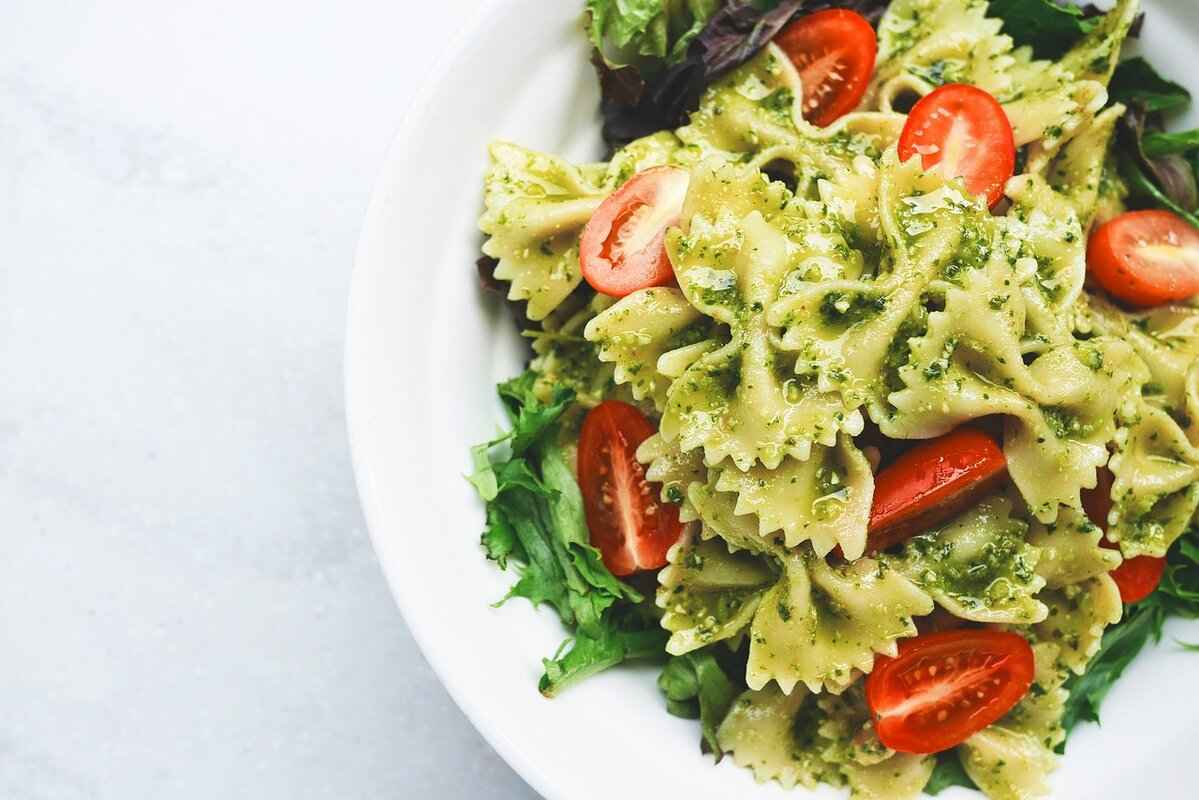
What Are the Cultural Significances of Mongolian Food?
Mongolian food is not just about sustenance; it is a vibrant expression of the country’s rich cultural heritage. The significance of food in Mongolia extends beyond mere nutrition, intertwining with social rituals, communal gatherings, and traditional practices that have been passed down through generations. This section delves into the cultural significance of Mongolian food, highlighting how it plays a crucial role in the lives of the Mongolian people.
Food is a vital part of Mongolian identity, showcasing the values and traditions of its people. The act of sharing meals strengthens bonds among family and friends, reinforcing a sense of community. Traditional dishes, often prepared during festivals and celebrations, embody the spirit of hospitality that is central to Mongolian culture.
Rituals surrounding food preparation and consumption are deeply embedded in Mongolian culture. For instance, during the Naadam Festival, special dishes are prepared to celebrate the heritage of wrestling, horse racing, and archery. These culinary practices not only honor tradition but also serve to reinforce social ties among participants.
Communal gatherings in Mongolia are often centered around food, fostering a spirit of togetherness. The preparation of dishes like Khorkhog or Buuz is typically a collective effort, where families and friends come together to cook and enjoy meals. This shared experience enhances relationships and creates lasting memories.
Many traditional Mongolian dishes carry symbolic meanings. For example, Airag, the fermented mare’s milk, is not only a refreshing beverage but also symbolizes the nomadic lifestyle and the deep connection between the people and their horses. Similarly, dishes served during significant life events, such as weddings or funerals, hold profound meanings that reflect the values of respect and remembrance.
The harsh climate of Mongolia dictates the availability of ingredients, which in turn influences food traditions. Seasonal changes bring different foods to the forefront, with summer being the time for fresh dairy products and winter focusing on hearty meat dishes. This cyclical nature of food consumption highlights the adaptability and resilience of the Mongolian people.
Food plays a pivotal role in Mongolian celebrations, often taking center stage during important events. Dishes such as Buuz are made in large quantities for family gatherings, while Khorkhog is often prepared for outdoor celebrations, reinforcing the connection to nature and community. The act of cooking and sharing these meals is seen as a form of blessing and gratitude.
In Mongolia, food serves as a bridge between generations. Elders pass down family recipes and cooking techniques to the younger generations, ensuring that cultural traditions remain alive. This transmission of knowledge fosters a sense of pride and continuity, allowing younger Mongolians to appreciate their heritage while adapting to modern influences.
In conclusion, the cultural significance of Mongolian food is profound and multifaceted. It embodies the values, traditions, and social connections that define Mongolian life. By exploring the rituals, communal gatherings, and symbolic meanings associated with food, one can gain a deeper understanding of the rich tapestry that is Mongolian culture.
Frequently Asked Questions
- What are the key ingredients in Mongolian cuisine?
Mongolian cuisine is heavily based on meat, dairy, and grains. These ingredients reflect the nomadic lifestyle of the people, providing hearty meals that sustain them through their daily activities.
- How does the nomadic lifestyle influence Mongolian food?
The nomadic lifestyle shapes food preparation and ingredient choices, as herders need meals that are easy to prepare and transport. This means a reliance on preserved foods and cooking methods that suit their mobile way of life.
- What are some popular meat dishes in Mongolia?
Mongolia is known for its delicious meat dishes, including buuz (steamed dumplings) and khorkhog (barbecued lamb). Each dish has its own preparation methods and cultural significance, often enjoyed during celebrations and gatherings.
- What role do dairy products play in Mongolian cuisine?
Dairy products are vital in Mongolian meals, providing essential nutrition. Items like aaruul (dried curd) and airag (fermented mare’s milk) are staples that add flavor and sustenance to the diet.
- How do seasonal changes affect Mongolian cuisine?
Seasonal changes greatly influence what ingredients are available, which in turn affects the types of dishes prepared. In winter, hearty meals are favored, while summer might see lighter, fresher options.






